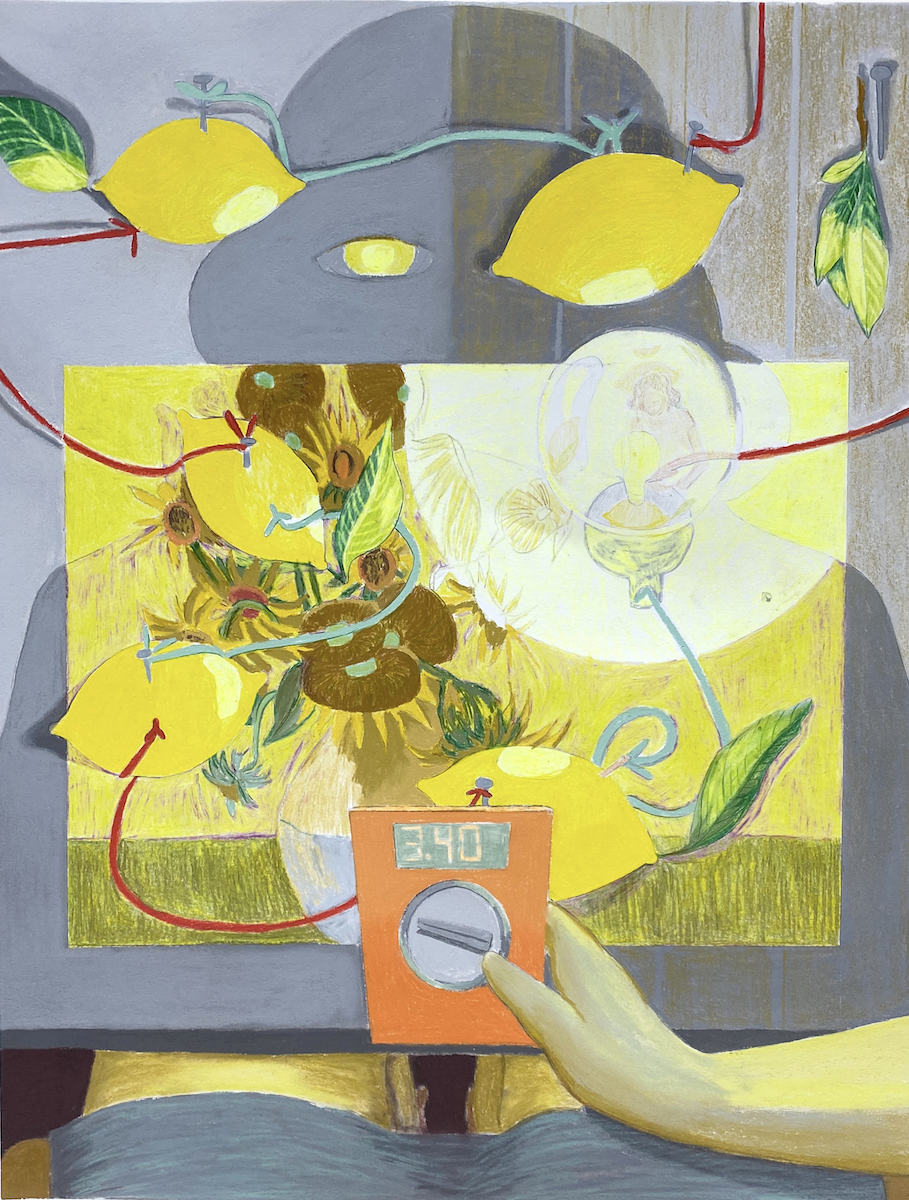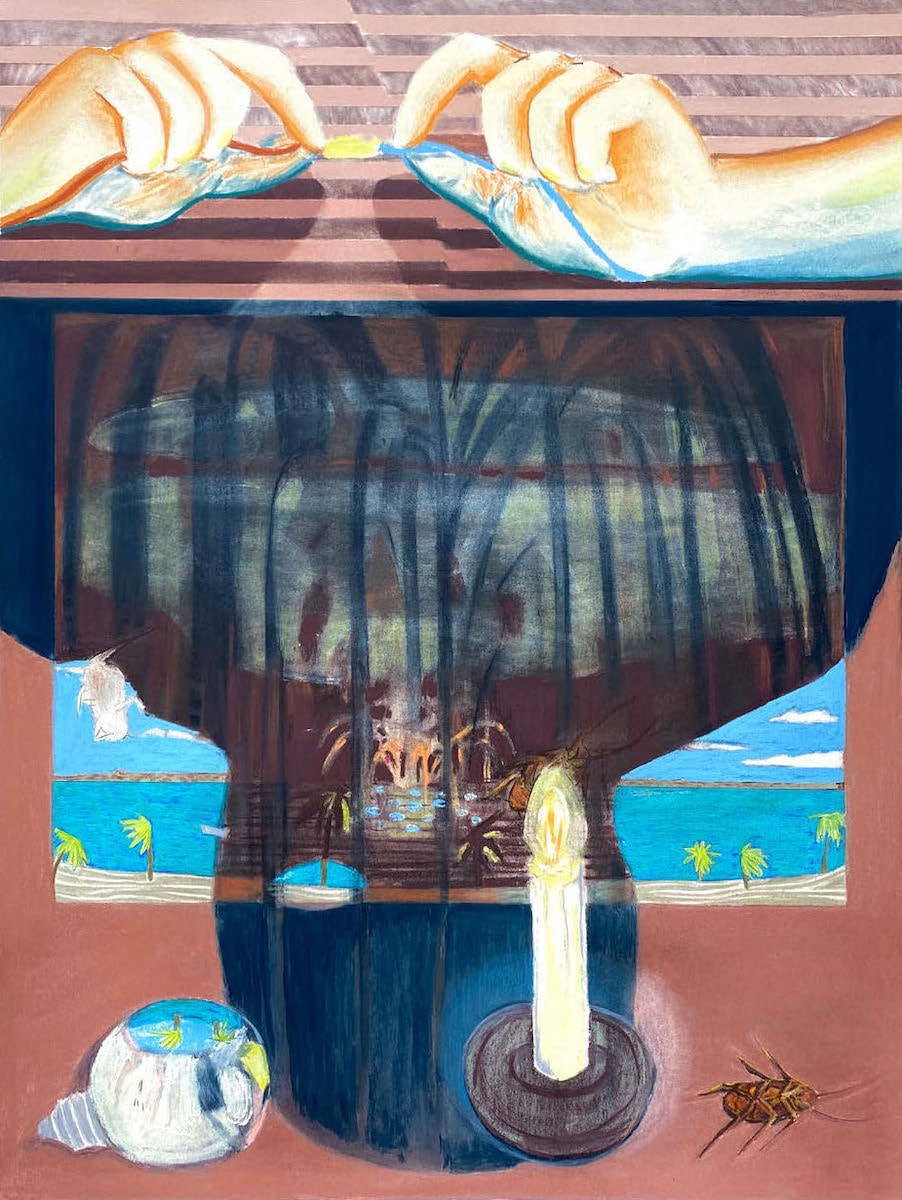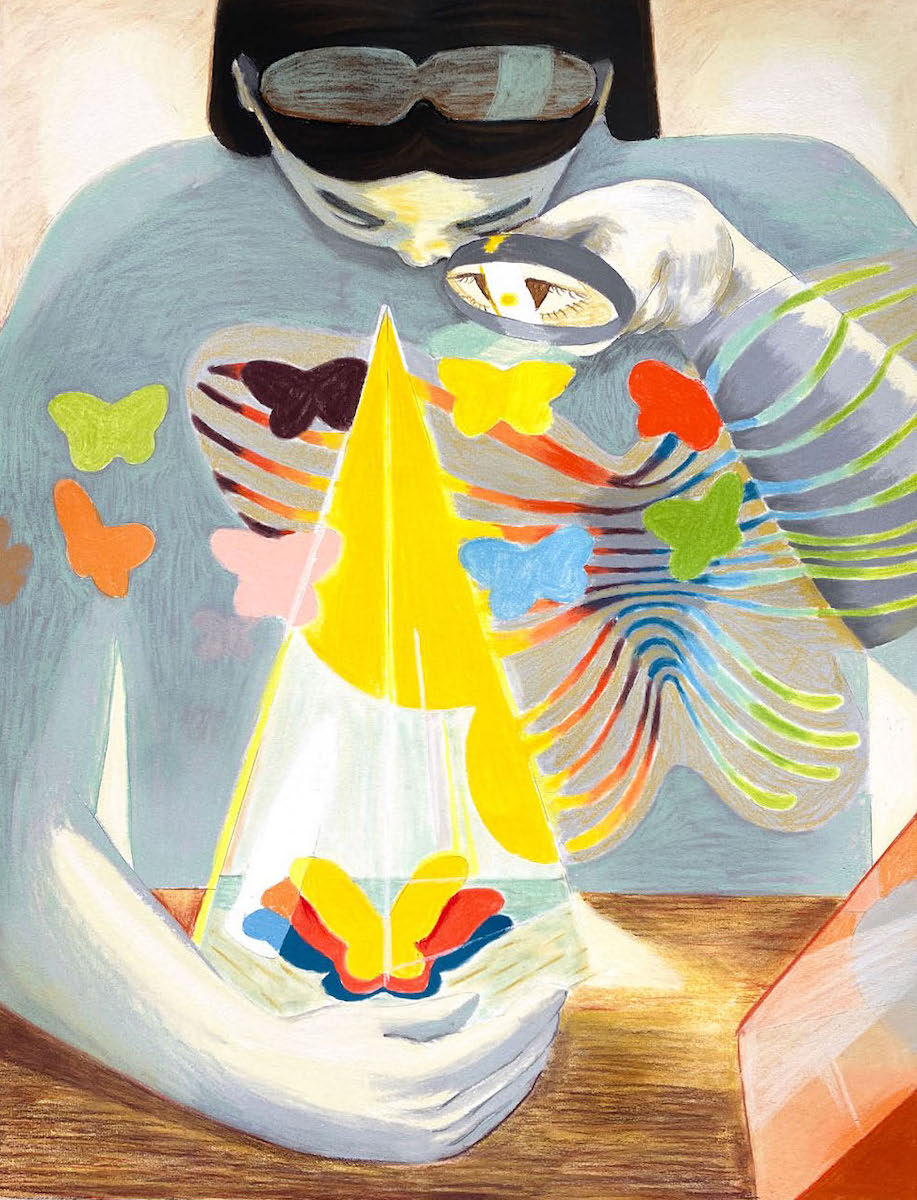Calliope Pavlides engineers her compositions like a to-do list, an Easter egg hunt, or survival kit. Her works on paper for an upcoming exhibition at Harkawik in New York City exist as impossible still lifes and contrary landscapes.
In the wake of a global pandemic, a climate crisis and personal micro-dramas, the Greek-born artist must “place everything on the table” and assess the damages. She works at microscopic levels, portraying a circuit of lemons pumping electricity (Citrus Circuit), or lab apparatus: magnifying glass, bulbs, prisms, circuits (There Simply aren’t Enough Colors on This Planet). Insects populate her apocalyptic scapes, which depict historic events. Shock to the System features a silhouette of the first hydrogen bomb with an illogical shadow cast over it.

Citrus Circuit, 2021, soft pastel and colored pencil on paper.
In her works—both still lifes and landscapes, which are often from a birds-eye vantage point, the viewer is given an omnipresent perspective on the happenings below. Pavlides, who received her BFA in 2020 from RISD, looks to her artwork to explore a system of knowledge and faith. Her artworks are cyclical in terms of composition and matter, exploring such themes as weather, and the life cycle of insects and combustion. We all know what happens after you strike a match, as alluded to in the troubling Pyro.
She takes an allegorical interest in weather, utilizing the motif for more challenging matter. The work is mostly reactionary and explores the healing factors of making art—“therapy painting.” But Pavlides’ works are more expedient than emotional. These specific drawings follow on from her most recent series of paintings, made last year, which were shown at Monte Vista Projects in Los Angeles. “Seasons of Unraveling” follows a personal apocalypse of unexpected phenomena. Being impacted by these uncontrollable, external forces, Pavlides asks: What are the systems? Who make the systems? In an attempt to break down faith (or faithlessness) and superstition, Pavlides attempts to take control of being a victim of a series of unfortunate events.

Shock to the System, 2021, soft pastel and colored pencil on paper.
One such series took place in the summer of 2021, when Calliope invited 10 guests to join her on a remote Greek island. Within days of their arrival, everyone began to test positive for COVID-19—all aside from Calliope herself. The island, which has no medical facilities, quickly turned from exotic idyll to total dystopia. After she returned to Athens the city was ablaze with a raging fire. Then there was the jellyfish sting. A few days later, her car exploded on a ferry. A mirror smashed at her feet. Her plane took off for Mexico to a Richter scale 7 earthquake. A two-week quarantine in Mexico before entering the US, an already anxiety-filled migratory trip, punctuated by a ritualistic daily rain. These instances are not traumatic nor painful, but rather consistent and relentless. Rigorous. Pavlides considers the notion of “luck” and its antithesis and the invisible forces at play—the rhythms we mistakenly inhabit and how we come to occupy them; how we escape their grip. Pavlides narrates these tragicomedies through her work.

There Simply aren’t Enough Colors on this Planet, 2021, soft pastel and colored pencil on paper.
Pavlides appreciates the rules one must abide by in drawing, and notes that the setting of parameters can often open us up to surprising opportunities. It is in the tension between the tender and the technical that her work is most compelling. Her drawings seem at once satirical and analytical, depicting what can sometimes seem like nonsense with the utmost sincerity. Perhaps it is the sincerity of this work, deftly rendered with color pastels, like velvet on soft paper, that steal the show: an antidote to post-internet art, which looks instead to nature. Perhaps this is what intrigues most: a drawing of a magnifying glass or prism instead of a technical photograph. The notion feels naive, but the expression is anything but.


